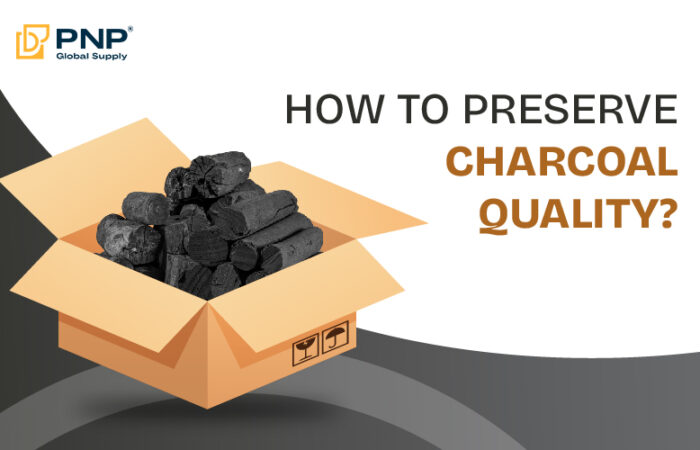Our premium mangrove charcoal isn’t merely a label; it embodies its essential elements. Crucially, properly charcoal storage is what ensures PNP’s charcoal maintains its high quality. Below are instructions on how to store charcoal most effectively that no one has ever taught or mentioned to you!
THE IMPORTANCE OF PROPERLY CHARCOAL STORAGE
Charcoal, being derived from organic materials, easily absorbs moisture. This moisture absorption causes the charcoal to clump, making it difficult to ignite. Additionally, moisture can foster mold growth and generate unpleasant odors, making the charcoal unfit for grilling. Therefore, proper storage is essential to preserve the quality of your BBQ briquettes and ensure you’re always ready for that perfect grilling session.
PROPER CHARCOAL STORAGE STEP BY STEP
Seal the Bag Tightly
Sealing the bag tightly when storing charcoal is essential to prevent moisture and air from affecting its quality. Use the original packaging if possible or transfer the charcoal into a sturdy, airtight container or bag. Ensure the bag is securely closed using its built-in closure or by using tape or clips for added protection. This step helps maintain the charcoal’s dryness and usability over time, ensuring it stays effective for cooking or grilling purposes.
Charcoal is highly absorbent and susceptible to moisture. When exposed to air and humidity, charcoal can absorb moisture, which can lead to clumping, reduced effectiveness in burning, and even degradation over time. By sealing the bag tightly, you create a barrier that prevents moisture from entering and affecting the charcoal.
Additionally, a tightly sealed bag helps to preserve the aroma and flavor of flavored charcoal, such as those infused with wood chips or other additives. This is especially important for applications like smoking and grilling, where the charcoal’s flavor profile contributes significantly to the final outcome of the food.
Furthermore, a tightly sealed bag helps to maintain the cleanliness of the charcoal. It prevents dust, dirt, and other contaminants from settling on the charcoal, ensuring that it remains clean and ready for use.
Properly sealed bags also contribute to efficient storage and organization. They help to keep the charcoal neatly contained, making it easier to store and transport without the risk of spillage or mess.
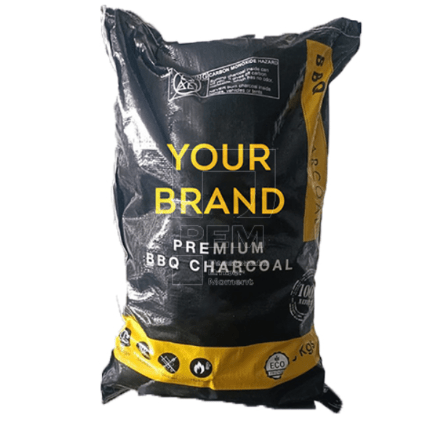
Store Mangrove Charcoal in Dry place
Mangrove charcoal absorbs moisture easily so where to store charcoal it in a cool, dry place away from humidity. Consider using a sealed container or airtight bag to prevent exposure to air and moisture is essential. Avoid storing charcoal directly on the ground, as it may absorb moisture from the soil.
Mangrove charcoal, like all charcoal types, is porous and easily absorbs moisture from its environment. Storing it in a dry place helps prevent moisture absorption, which can cause the charcoal to clump together and become less effective for burning.
Dry storage conditions also preserve the quality of mangrove charcoal over time. Moisture can degrade charcoal, reducing its heat output and altering its burning characteristics. By keeping it dry, you maintain its original quality and reliability for grilling, smoking, or industrial uses.
Furthermore, storing mangrove charcoal in a dry place helps prevent the growth of mold and mildew. These contaminants can affect the cleanliness and safety of the charcoal, potentially rendering it unusable.
Proper storage in a dry environment extends the shelf life of mangrove charcoal, ensuring it remains effective and usable for a longer period. This reduces the need for frequent replacements and enhances overall efficiency in handling and storage.
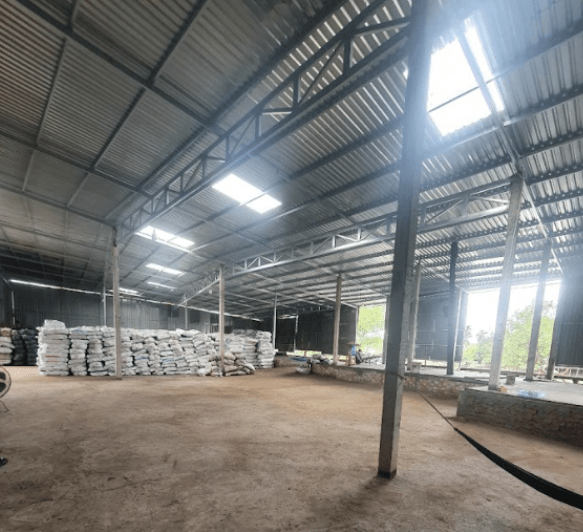
Use a Charcoal Storage Bin
Invest in a dedicated charcoal storage bin or container. These are designed to keep charcoal dry and protected from the elements. Look for bins with tight-fitting lids and made from materials that resist moisture.
So using a charcoal storage bin is a practical solution to ensure the quality and usability of charcoal. Here’s why it matters. A dedicated storage bin provides a sealed or covered environment that protects charcoal from humidity, rain, and other elements. This helps prevent the charcoal from clumping together or becoming damp, which can affect its burning efficiency and quality.
Moreover, a storage bin helps to maintain the organization of charcoal supplies. It keeps the charcoal neatly stored and easily accessible, which is especially beneficial in settings where large quantities of charcoal are used regularly.
By using a charcoal storage bin, you can prolong the shelf life of charcoal. Proper storage conditions prevent premature degradation and ensure that the charcoal remains effective and reliable over time. This is important both economically and environmentally, as it reduces the need for frequent replacements and minimizes waste.
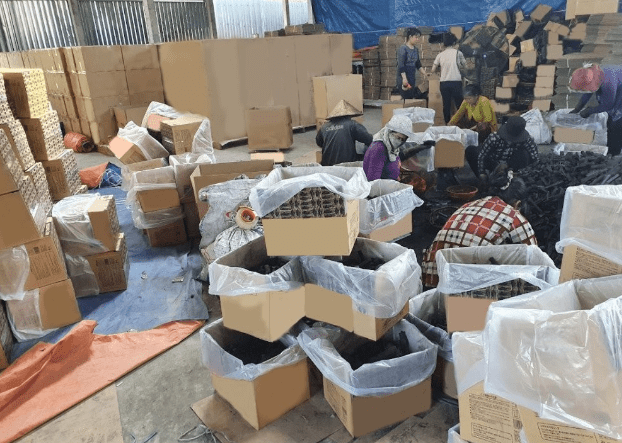
Store in a Sheltered Area
Storing charcoal in a sheltered area plays a crucial role in maintaining its quality and ensuring its optimal performance:
Charcoal, being highly porous, readily absorbs moisture from the environment. Exposure to rain, snow, or even high humidity can lead to the charcoal becoming damp and less effective for burning. By storing charcoal in a sheltered area, such as a covered shed, warehouse, or storage facility, you protect it from these environmental factors.
Furthermore, a sheltered storage area helps to maintain consistency in the quality of charcoal. This is particularly important for industries where precise burning properties are required, such as in metalworking or food processing. Consistently dry charcoal ensures reliable performance and efficient combustion, reducing waste and enhancing productivity.
In addition to protecting against moisture, storing charcoal in a sheltered environment helps to prolong its shelf life. Proper storage conditions can prevent premature degradation and maintain the charcoal’s effectiveness over time. This is beneficial both economically, by reducing the need for frequent replacements, and environmentally, by minimizing waste.
If storing charcoal outdoors, ensure it’s kept in a sheltered area, such as a garage or shed. Avoid leaving it exposed to rain or direct sunlight, as both can degrade the quality of mangrove charcoal.
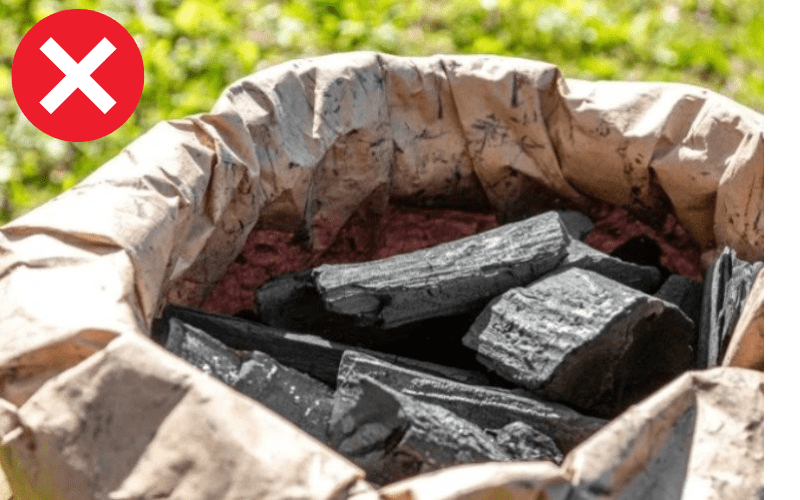
Optimal Temperature
Maintaining optimal temperatures during the storage of charcoal is critical to preserving its quality and performance. Extreme heat or cold can impact its performance. A moderate, stable temperature will help preserve its quality over time.
Charcoal is sensitive to temperature extremes. High temperatures can accelerate the degradation of charcoal, causing it to lose its effectiveness and burn less efficiently. On the other hand, extremely low temperatures can affect the moisture content of the charcoal, potentially leading to condensation and clumping.
Ideally, charcoal should be stored in a cool, dry place away from direct sunlight and sources of heat. This helps to minimize fluctuations in temperature that can impact its quality over time.
Consistent temperatures help preserve the combustibility of charcoal, ensuring it retains its ability to ignite easily and burn evenly. This is particularly important in industrial applications where reliable performance is crucial for production processes.
Additionally, maintaining optimal temperatures helps to extend the shelf life of charcoal. By storing it in a stable environment, you reduce the risk of premature degradation and ensure that the charcoal remains effective for a longer period.
Consider Desiccants (optional)
Consider using desiccants when storing charcoal to help maintain its quality by absorbing excess moisture from the storage environment. Desiccants, such as silica gel packs or calcium chloride bags, can be placed inside containers or bags of charcoal to reduce humidity and prevent the charcoal from becoming damp or clumping together
Desiccants are particularly useful in areas with high humidity or during humid seasons when moisture absorption is more likely. They help to extend the shelf life of charcoal by keeping it dry and preserving its burning efficiency. This extra step can help extend the life and performance of your mangrove charcoal.
Using desiccants is optional but recommended for long-term storage or in environments where moisture control is challenging. They can contribute to maintaining the quality and usability of charcoal, ensuring it remains effective for grilling, smoking, or industrial applications.
In conclusion
Mastering charcoal storage is crucial for preserving the quality and longevity of your mangrove charcoal. To ensure your charcoal remains in top condition, follow these essential tips on how to store charcoal: use proper cooling and drying techniques, select suitable storage containers, and protect against moisture and heat. Regular inspections and rotation also help maintain its effectiveness. By adhering to these guidelines, you’ll keep your charcoal in excellent shape, ready for use whenever you need it.
To ensure the best performance and longevity of your charcoal, proper storage is essential. For premium-quality mangrove charcoal, trust PNP Charcoal, a leading supplier and manufacturer in Vietnam. Explore our top-notch products and learn more about maintaining their quality on our website.

